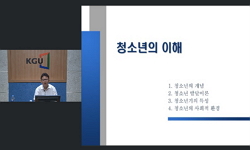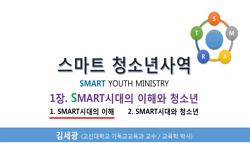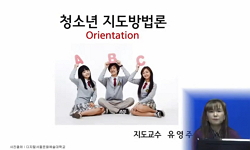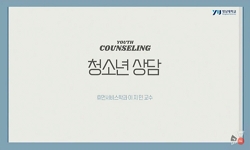Experiences of violence have been recognized as a serious issue affecting adolescents' suicidal thoughts, especially in crisis situations like the COVID-19 pandemic, which places vulnerable youth in even more precarious environments. While many prior ...
http://chineseinput.net/에서 pinyin(병음)방식으로 중국어를 변환할 수 있습니다.
변환된 중국어를 복사하여 사용하시면 됩니다.
- 中文 을 입력하시려면 zhongwen을 입력하시고 space를누르시면됩니다.
- 北京 을 입력하시려면 beijing을 입력하시고 space를 누르시면 됩니다.
폭력피해경험이 청소년의 자살생각에 미치는 영향 : 코로나19 발생 전후 비교 중심으로 = The Impact of Violence Victimization on Suicidal Ideation Among Adolescents: A Focus on Comparisons Before and After COVID-19
한글로보기부가정보
다국어 초록 (Multilingual Abstract)
This study aims to empirically analyze the independent effects of environmental risk factors, such as experiences of domestic violence, school violence, and cyberbullying, on adolescent suicidal thoughts before and after the COVID-19 pandemic. Additionally, the study examines how these impacts have changed through interaction effects with COVID-19. The study uses data from the National Human Rights Survey for Children and Adolescents, conducted before the pandemic (2019) and during the pandemic (2020), focusing on adolescents who have experienced domestic violence, school violence, or cyberbullying. The analysis uses statistical software R version 4.3.3 to perform frequency analysis, chi-square tests, logistic regression, and interaction effect analysis.
The results show that adolescents with experiences of domestic violence, school violence, and cyberbullying both before and after the pandemic exhibited higher rates of suicidal thoughts. The study found that experiences of physical and emotional violence by parents (guardians), neglect, and cyberbullying had a statistically significant impact on adolescents' suicidal thoughts both before and after the COVID-19 outbreak. Emotional violence experienced from teachers did not significantly affect suicidal thoughts before the pandemic, but it became a significant factor after the pandemic. Peer bullying, which was significant before the pandemic, no longer had a significant effect on adolescents' suicidal thoughts after the pandemic. Furthermore, an analysis of the interaction effects between each type of violence and the COVID-19 pandemic revealed a significant interaction effect for emotional violence by teachers. This suggests that the COVID-19 pandemic worsened the suicidal thoughts of adolescents who had experienced emotional violence by teachers.
In conclusion, the study indicates that changes in social environments and interaction patterns due to the pandemic have altered the factors influencing adolescents' suicidal thoughts. Combining these findings with theoretical frameworks such as Durkheim’s theory of suicide, it can be argued that adolescents, who suddenly lost the expected social and psychological norms in a transformed environment, may become closely linked to suicidal thoughts. This supports the interpersonal-psychological theory of suicide, which posits that negative and vulnerable psychological states arising from traumatic events and problems in relationships with significant others contribute to the development of suicidal thoughts among adolescents.
Experiences of violence have been recognized as a serious issue affecting adolescents' suicidal thoughts, especially in crisis situations like the COVID-19 pandemic, which places vulnerable youth in even more precarious environments. While many prior studies have reported the impact of violence experiences on adolescent suicidal thoughts, there is a lack of research that specifically addresses the relationship between violence experiences and suicidal thoughts in the context of the COVID-19 pandemic. Existing studies have primarily used data before or after the pandemic to examine this relationship but have not clearly distinguished between the pre-existing effects and those brought on by the pandemic. Therefore, the changes in this relationship due to the COVID-19 pandemic have not been sufficiently analyzed.
This study aims to empirically analyze the independent effects of environmental risk factors, such as experiences of domestic violence, school violence, and cyberbullying, on adolescent suicidal thoughts before and after the COVID-19 pandemic. Additionally, the study examines how these impacts have changed through interaction effects with COVID-19. The study uses data from the National Human Rights Survey for Children and Adolescents, conducted before the pandemic (2019) and during the pandemic (2020), focusing on adolescents who have experienced domestic violence, school violence, or cyberbullying. The analysis uses statistical software R version 4.3.3 to perform frequency analysis, chi-square tests, logistic regression, and interaction effect analysis.
The results show that adolescents with experiences of domestic violence, school violence, and cyberbullying both before and after the pandemic exhibited higher rates of suicidal thoughts. The study found that experiences of physical and emotional violence by parents (guardians), neglect, and cyberbullying had a statistically significant impact on adolescents' suicidal thoughts both before and after the COVID-19 outbreak. Emotional violence experienced from teachers did not significantly affect suicidal thoughts before the pandemic, but it became a significant factor after the pandemic. Peer bullying, which was significant before the pandemic, no longer had a significant effect on adolescents' suicidal thoughts after the pandemic. Furthermore, an analysis of the interaction effects between each type of violence and the COVID-19 pandemic revealed a significant interaction effect for emotional violence by teachers. This suggests that the COVID-19 pandemic worsened the suicidal thoughts of adolescents who had experienced emotional violence by teachers.
In conclusion, the study indicates that changes in social environments and interaction patterns due to the pandemic have altered the factors influencing adolescents' suicidal thoughts. Combining these findings with theoretical frameworks such as Durkheim’s theory of suicide, it can be argued that adolescents, who suddenly lost the expected social and psychological norms in a transformed environment, may become closely linked to suicidal thoughts. This supports the interpersonal-psychological theory of suicide, which posits that negative and vulnerable psychological states arising from traumatic events and problems in relationships with significant others contribute to the development of suicidal thoughts among adolescents.
국문 초록 (Abstract)
본 연구는 코로나19 발생 전후 청소년의 자살생각에 관한 환경적 위험요인인 가정폭력 피해경험, 학교폭력 피해경험, 사이버폭력 피해경험이 독립적으로 자살생각에 미치는 영향을 실증적으로 분석하고자 한다. 또한 코로나19와의 상호작용 효과를 통해 코로나19 이전과 이후 달라지는 영향을 분석한다. 이를 위해 코로나19 발생 이전(2019년)과 팬데믹 기간(2020년)에 조사된 아동·청소년 인권실태조사 원자료를 모두 활용하여, 연구대상은 가정폭력, 학교폭력, 사이버폭력 피해 경험이 있는 청소년으로 설정하였다. 분석은 추출된 자료를 바탕으로 통계 프로그램 R version 4.3.3을 사용하여 빈도분석, 카이제곱 검정, 로지스틱 회귀분석, 상호작용효과 분석을 실시하였다.
분석 결과에 의하면 코로나19 발생 전후 가정폭력, 학교폭력, 사이버폭력피해경험이 있는 청소년에서 모두 자살생각 경험 비율이 높은 것으로 나타났다. 코로나19 발생 전후에 모두 부모(보호자)에 의한 신체적 폭력과 정서적 폭력피해경험, 방임 경험, 그리고 사이버폭력 피해경험이 청소년의 자살생각에 통계적으로 유의미한 영향을 미치는 요인으로 밝혀냈다. 교사에 의한 정서적 폭력피해경험은 코로나19 이전에는 청소년의 자살생각에 유의미한 영향을 미치지 않았으나, 코로나19 이후에는 유의미한 영향을 미치는 것으로 나타났다. 또래 괴롭힘 경험은 코로나19 전에는 유의미한 영향을 미쳤으나, 코로나19 이후에는 청소년의 자살생각에 유의미한 영향을 미치지 않는 것으로 확인되었다. 각 영역별의 폭력피해경험과 코로나19 전후의 상호작용 효과를 검증한 결과, 교사에 의한 정서적 폭력피해경험이 코로나19 전후와 유의미한 상호작용 효과 있는 것으로 확인되었다. 즉, 코로나19 팬데믹이 교사에 의한 정서적 폭력 피해를 경험한 청소년의 자살생각을 더욱 악화시킨다는 결과가 도출되었다.
결론적으로, 팬데믹으로 인해 사회적 환경과 상호작용 방식이 변화하면서 청소년들의 자살생각에 영향을 미치는 요인도 변화했음을 제시한다. 본 연구의 결과와 이론을 결합해 보면 뒤르켐의 자살론을 기반으로 청소년들이 갑자기 변화된 심리-환경적 상황 속에서 자신에게 기대되는 적절한 기준을 상실하는 상태가 자살생각과 밀접하게 연결될 수 있음을 제시한다. 또한 자살의 대인관계-심리학적 이론을 뒷받침하며, 청소년들이 처한 환경에서 겪은 사건이나 중요한 타인과의 관계 문제로 인해 심리적·정서적으로 부정적이고 취약한 상태가 되어 자살 생각에 이르게 된다는 이론적 설명에 기여한다.
폭력피해경험이 청소년의 자살생각에 미치는 심각한 문제로 주목을 받고 있으며, 특히 코로나19와 같은 위기 상황에서는 취약한 환경에 처해 있는 청소년에 대해 더욱 관심이 필요하다. 많...
폭력피해경험이 청소년의 자살생각에 미치는 심각한 문제로 주목을 받고 있으며, 특히 코로나19와 같은 위기 상황에서는 취약한 환경에 처해 있는 청소년에 대해 더욱 관심이 필요하다. 많은 선행연구들이 폭력피해경험이 청소년 자살생각에 미치는 영향을 보고했으나, 코로나19의 변화된 환경에서 폭력피해경험과 청소년의 자살생각 간의 관계를 다룬 연구는 부족하다. 또한 기존 연구들은 주로 코로나19 이전 또는 이후의 데이터를 사용하여 폭력피해경험과 청소년의 자살생각 간의 관계를 밝혀냈으나, 기존 효과와 코로나19의 영향을 명확히 구분하지 못하였다. 따라서 코로나19 팬데믹이 이 관계에 미친 변화에 대한 분석이 충분히 이루어지지 못하였다.
본 연구는 코로나19 발생 전후 청소년의 자살생각에 관한 환경적 위험요인인 가정폭력 피해경험, 학교폭력 피해경험, 사이버폭력 피해경험이 독립적으로 자살생각에 미치는 영향을 실증적으로 분석하고자 한다. 또한 코로나19와의 상호작용 효과를 통해 코로나19 이전과 이후 달라지는 영향을 분석한다. 이를 위해 코로나19 발생 이전(2019년)과 팬데믹 기간(2020년)에 조사된 아동·청소년 인권실태조사 원자료를 모두 활용하여, 연구대상은 가정폭력, 학교폭력, 사이버폭력 피해 경험이 있는 청소년으로 설정하였다. 분석은 추출된 자료를 바탕으로 통계 프로그램 R version 4.3.3을 사용하여 빈도분석, 카이제곱 검정, 로지스틱 회귀분석, 상호작용효과 분석을 실시하였다.
분석 결과에 의하면 코로나19 발생 전후 가정폭력, 학교폭력, 사이버폭력피해경험이 있는 청소년에서 모두 자살생각 경험 비율이 높은 것으로 나타났다. 코로나19 발생 전후에 모두 부모(보호자)에 의한 신체적 폭력과 정서적 폭력피해경험, 방임 경험, 그리고 사이버폭력 피해경험이 청소년의 자살생각에 통계적으로 유의미한 영향을 미치는 요인으로 밝혀냈다. 교사에 의한 정서적 폭력피해경험은 코로나19 이전에는 청소년의 자살생각에 유의미한 영향을 미치지 않았으나, 코로나19 이후에는 유의미한 영향을 미치는 것으로 나타났다. 또래 괴롭힘 경험은 코로나19 전에는 유의미한 영향을 미쳤으나, 코로나19 이후에는 청소년의 자살생각에 유의미한 영향을 미치지 않는 것으로 확인되었다. 각 영역별의 폭력피해경험과 코로나19 전후의 상호작용 효과를 검증한 결과, 교사에 의한 정서적 폭력피해경험이 코로나19 전후와 유의미한 상호작용 효과 있는 것으로 확인되었다. 즉, 코로나19 팬데믹이 교사에 의한 정서적 폭력 피해를 경험한 청소년의 자살생각을 더욱 악화시킨다는 결과가 도출되었다.
결론적으로, 팬데믹으로 인해 사회적 환경과 상호작용 방식이 변화하면서 청소년들의 자살생각에 영향을 미치는 요인도 변화했음을 제시한다. 본 연구의 결과와 이론을 결합해 보면 뒤르켐의 자살론을 기반으로 청소년들이 갑자기 변화된 심리-환경적 상황 속에서 자신에게 기대되는 적절한 기준을 상실하는 상태가 자살생각과 밀접하게 연결될 수 있음을 제시한다. 또한 자살의 대인관계-심리학적 이론을 뒷받침하며, 청소년들이 처한 환경에서 겪은 사건이나 중요한 타인과의 관계 문제로 인해 심리적·정서적으로 부정적이고 취약한 상태가 되어 자살 생각에 이르게 된다는 이론적 설명에 기여한다.
목차 (Table of Contents)
- 국문요지 v
- 제1장 서론 1
- 제2장 이론적 배경 및 선행연구 6
- 국문요지 v
- 제1장 서론 1
- 제2장 이론적 배경 및 선행연구 6
- 제1절 청소년과 자살생각 6
- 1. 청소년의 자살생각 6
- 2. 청소년의 자살 특성에 대한 사회학적 접근: 뒤르켐의 자살론 8
- 제2절 폭력피해경험과 청소년의 자살생각 관계 11
- 1. Joiner의 대인관계-심리학적이론 11
- 2. 폭력피해경험 영역별과 청소년의 자살생각에 관계 13
- 1) 가정폭력 피해경험과 청소년의 자살생각 13
- 2) 학교폭력 피해경험과 청소년의 자살생각 15
- 3) 사이버폭력 피해경험과 청소년의 자살생각 18
- 제3절 코로나19 팬데믹 21
- 1. 코로나19 팬데믹으로 인한 변화 21
- 2. 코로나19 팬데믹과 청소년의 자살생각 23
- 제4절 위험요인 모델 26
- 제5절 연구목적 및 연구문제 28
- 제3장 연구방법 29
- 제1절 연구자료 및 대상 29
- 제2절 변수의 정의 및 측정 30
- 1. 종속변수 30
- 2. 독립변수 31
- 3. 통제변수 32
- 제3절 분석방법 34
- 제4장 연구결과 36
- 제1절 코로나19 발생 전후 연구 대상자의 인구사회학적 특성 36
- 제2절 코로나19 발생 전후 연구 대상자의 폭력피해경험 및 자살생각 특성
- . 39
- 제3절 코로나19 발생 전후 청소년의 인구사회학적 요인 및 폭력피해경험에
- 따른 자살생각의 차이 43
- 1. 코로나19 이전 청소년의 인구사회학적 요인 및 폭력피해경험에 따른
- 자살생각 차이 43
- 2. 코로나19 이후 청소년의 인구사회학적 요인 및 폭력피해경험에 따른
- 자살생각 차이 48
- 제4절 코로나19 발생 전후 폭력피해경험이 청소년의 자살 생각에 미치는 영
- 향 54
- 1. 코로나19 발생 이전 폭력피해경험이 청소년의 자살생각에 미치는 영향 54
- 2. 코로나19 발생 이후 폭력피해경험이 청소년의 자살생각에 미치는 영향 58
- 제5절 코로나19 발생 전후에 따른 폭력피해경험 영역별이 청소년의 자살생
- 각에 미치는 영향의 차이 60
- 제5장 결론 및 논의 63
- 1. 연구 결과 요약 63
- 2. 연구 결과에 대한 논의 66
- 3. 한계점 및 후속 연구 71
- 참고문헌 73
- Abstract 87












